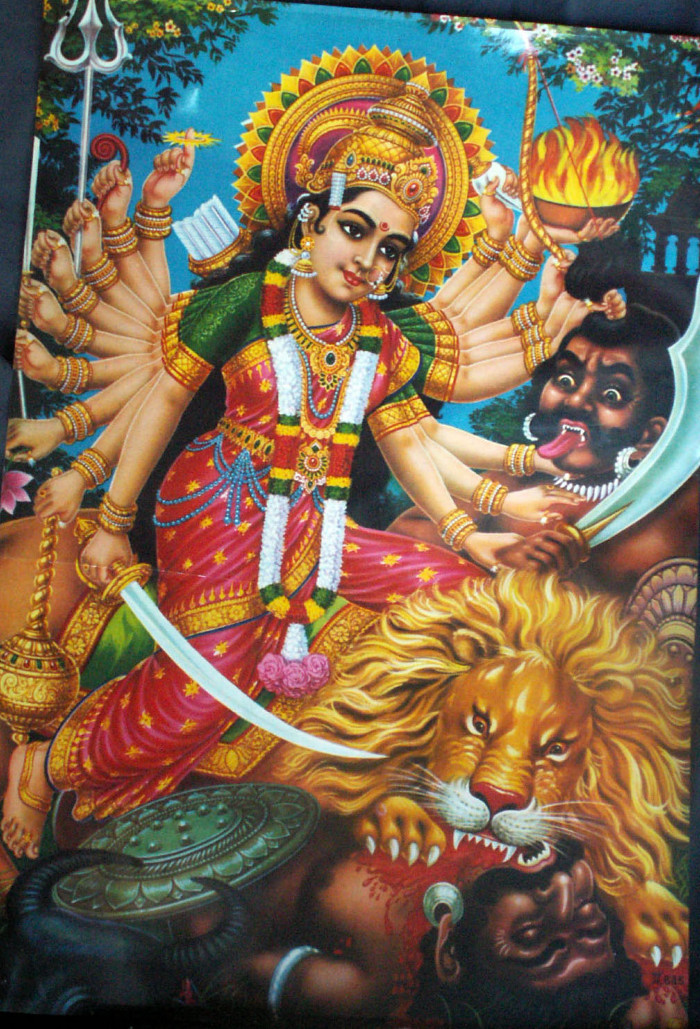US Hindu Holy Figure: "Durga"
Collection: Spiritual Connections
This Hindu poster depicts the Hindu goddess Durga. Hindus hang such posters and decorate them as part of their religious devotions.
Durga, Sanskrit for “the Inaccessible,” is a Hindu goddess created by other gods. Hindus believe that Durga was incarnated as the united power of all divine beings, including Brahma, Vishnu and Shiva, who offered her the required physical attributes and weapons to kill the demon bull "Mahishasur". Embodying their collective energy (shakti), she both comes from the male divinities and also provides them with their inner power. She is also greater than any of them.
Born fully grown and beautiful, Durga presents a fierce menacing form to her enemies. She is usually depicted riding a lion and with eight or ten arms, each holding the special weapon of one of the gods, who gave them to her for her battle against the buffalo demon.
The conch shell in Durga's hand symbolizes the mystic word 'Om'. The bow and arrows represent energy. The thunderbolt signifies firmness. The lotus in Durga's hand is not fully bloomed, symbolizing certainty of success but not finality. The discus, which spins around the index finger of the Goddess, while not touching it, signifies that the entire world is subservient to the will of Durga. The sword that Durga holds symbolizes knowledge, which has the sharpness of a sword. Durga's vehicle is the lion, representing power, will and determination.
Hinduism is the oldest living religion, about 4,000 – 5,000 years old. Hindu people believe that Brahman is the creator, preserver and transformer of existence. Gods that are part of Brahman include Vishnu, the preserver god, and Shiva, the god of destruction. Hinduism came from India. No one person founded the religion. There are many Hindu holy books. Hindus honor their deities through worship. Hindus tell stories of the ways that the gods interact with each other and with humans. Hindus believe in rebirth after death (reincarnation); their goal is to escape the movement of the soul into another body and to become one with Brahman.
Source:
http://en.wikipedia.org/wiki/Durga http://hinduism.about.com/od/hindugoddesses/a/durga.htm http://www.shivashakti.com/durga.htm
"Durga." Encyclopædia Britannica. Encyclopædia Britannica Online Academic Edition. Encyclopædia Britannica Inc., 2013. Web. 11 Oct. 2013. .
